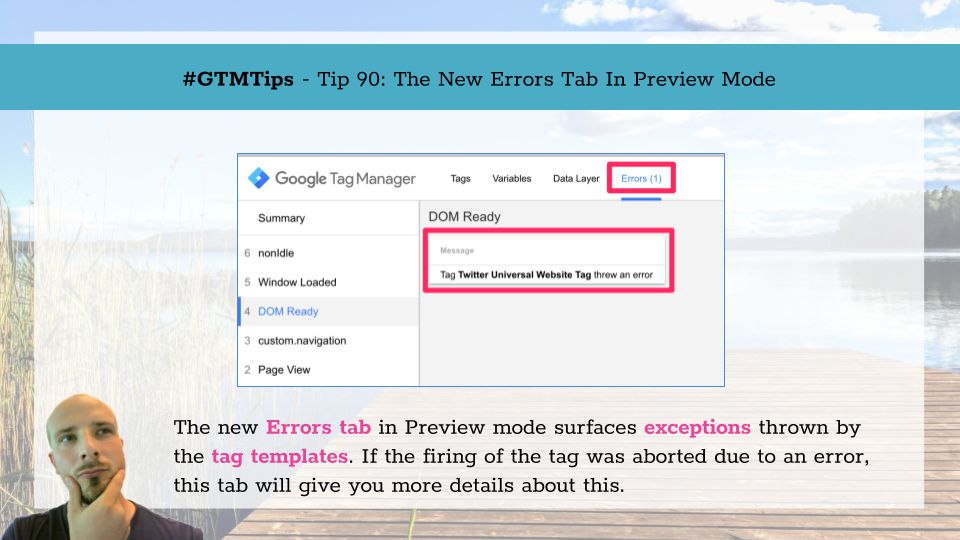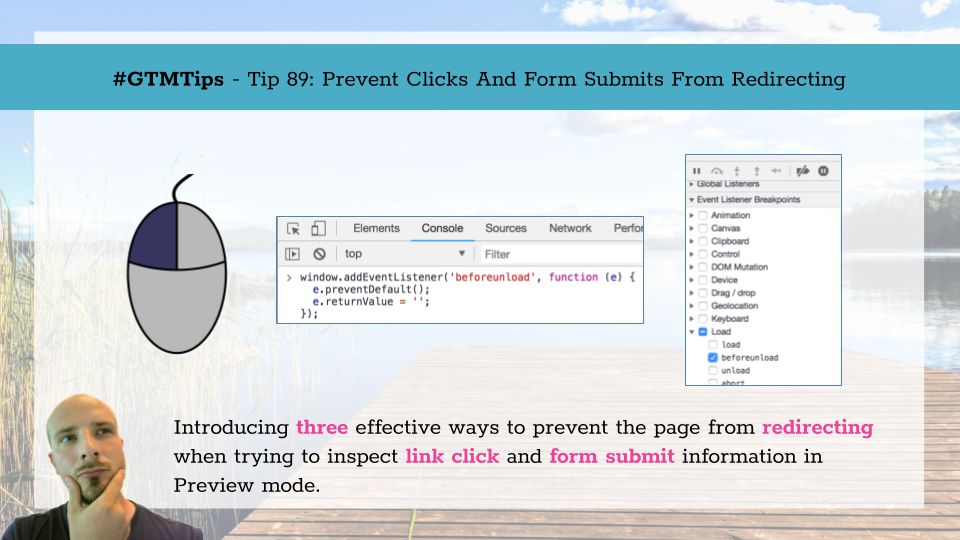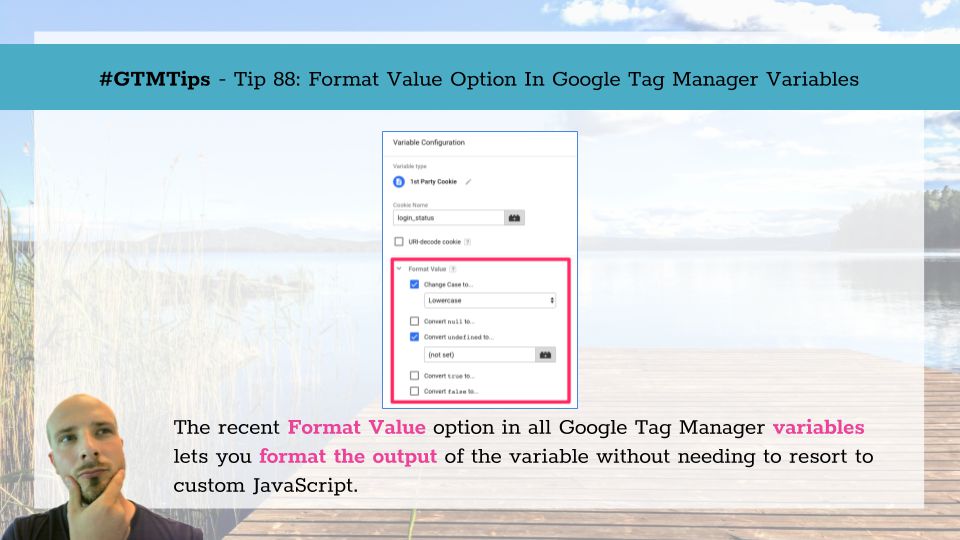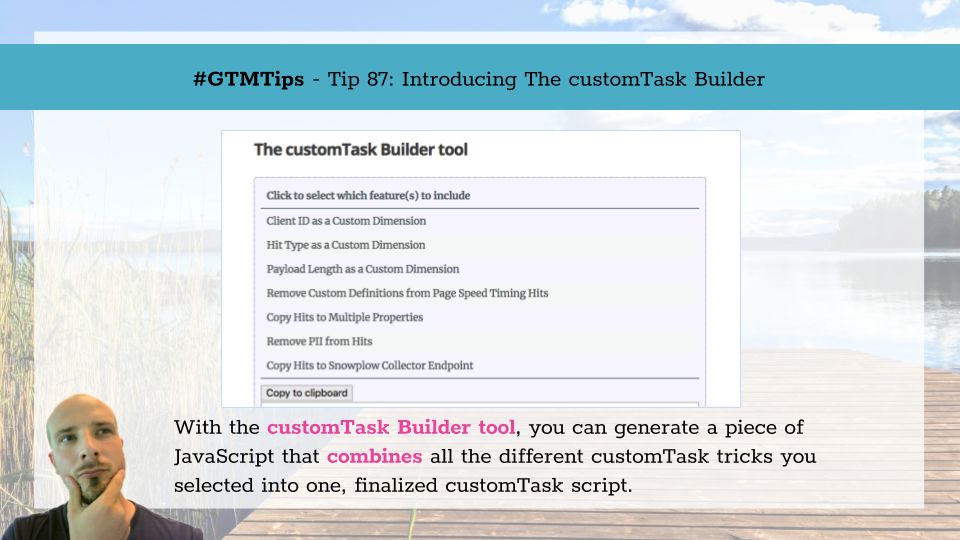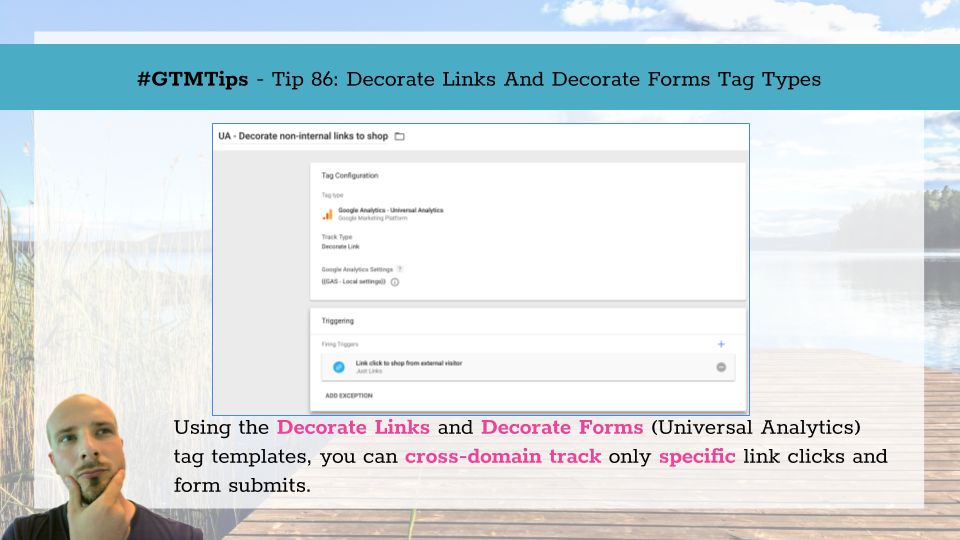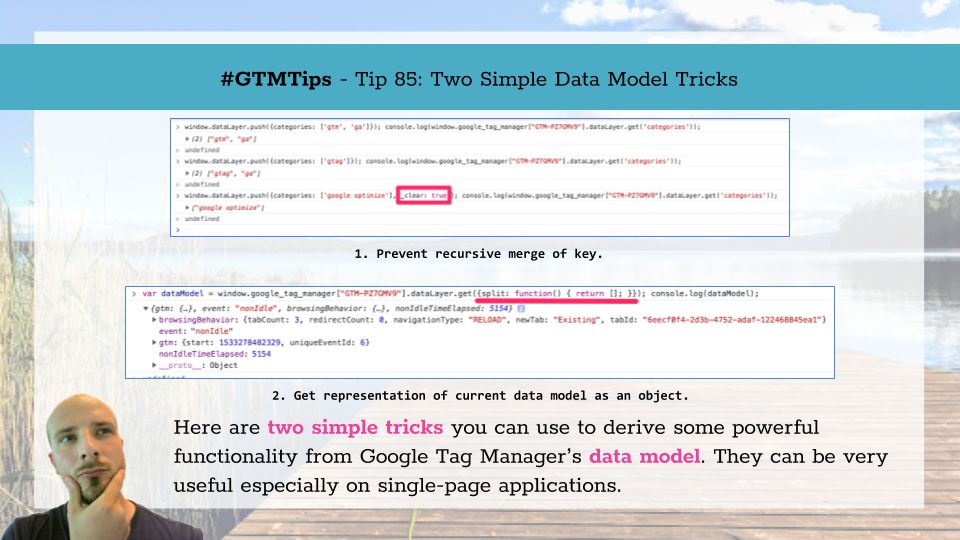While using the Google Tag Manager user interface around Halloween 2018, you might have noticed a new tab in Google Tag Manager’s Preview mode. The tab is named Errors and shows you the number of exceptions thrown by GTM’s tag templates on the page. In this short #GTMTips post, I’ll quickly walk you through what the tab shows.
Tip 90: The Errors Tab In Preview Mode The tab’s name is an apt description of what the tab shows.
